What's New
Displaying results 4311 - 4320 of 4914

Resource | Presentations,
Behavioral sentinel surveillance (BSS) provides the descriptive epidemiology of sexual behaviors among the most-at-risk groups. BSS 2007 is the seventh round of BSS. The objectives of the BSS 2007 are:
- Provide specific specific-year information on socio-demographic and risk behavior related to HIV/ STIs.
- Monitor sexual behavior of risk groups from year to year and to examine trends in behavior change in high risk groups.
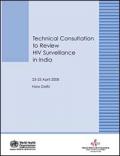
Resource | Publications,
Since the first HIV infection was reported in India in 1986, the epidemic continues to grow. India has the third highest HIV burden in the world with an estimated 2.5 million (range: 2–3.1 million) people living with HIV in 2006. HIV surveillance in India began in 1985 and has substantially expanded over the years. Presently, the following mechanisms are used to track the epidemic: HIV sero surveillance for different populations in 1122 sentinel sites; nationally representative behavioural surveillance surveys in a sample of 100 000 general population and 20 000 in populations with high-risk behaviours; AIDS case reporting from all states; and surveillance for STIs from more than 900 facilities across the country.
This report summarizes the discussions and recommendations of the Technical Consultation to Review HIV Surveillance in India.

Resource | Publications,
According to Vietnamese policy, HIV-infected women should have access at least to HIV testing and Nevirapine prophylaxis, or where available, to adequate counselling, HIV infection staging, ARV prophylaxis, and infant formula. Many studies in high HIV prevalence settings have reported low coverage of prevention of mother-to-child transmission (PMTCT) services, but there have been few reports from low HIV prevalence settings, such as Asian countries. We investigated the access of HIV-infected pregnant women to PMTCT services in the well-resourced setting of the capital city, Hanoi.
In a setting where PMTCT is available, HIV-infected women and children did not receive adequate care because of barriers to accessing those services. The results suggest key improvements would be improving quality of counselling and making PMTCT guidelines available to health services. Women should receive early HIV testing with adequate counselling, safe care and prophylaxis in a positive atmosphere towards HIV-infected women.

Resource | Publications,
No new estimates of HIV infection have been available for China since 2003. However, since then, data availability has increased dramatically. This document's objective is to use internationally recommended methods to make new estimates of the number of people exposed to HIV in China, the number living with HIV, and the number of new HIV infections and deaths in 2005.
The UNAIDS Workbook method was adapted to meet the needs of China. Local data were used to estimate the size of each risk population and HIV prevalence by risk group for every prefecture. These estimates were combined into provincial and national estimates. The UNAIDS Estimates and Projections Package and Spectrum were used to derive estimates of incidence and mortality from prevalence data, taking into account treatment.
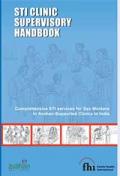
Resource | Guidelines,
Supervision is the process of directing and supporting staff so that they may perform their duties more effectively. There are many functions of supervision, including motivating and training staff; sharing data and guidelines; monitoring and evaluating staff performance; managing day-to-day challenges; and facilitating organizational support.
This handbook provides a quick reference to the principles and processes of effective supervision. It is intended to help supervisors work together with the clinic staff to provide the best possible services for the key population.

Resource | Publications,
Myanmar is experiencing an HIV epidemic documented since the late 1980s. The National AIDS Programme national surveillance ante-natal clinics had already estimated in 1993 that 1.4% of pregnant women were HIV positive, and UNAIDS estimates that at end 2005 1.3% (range 0.7–2.0%) of the adult population was living with HIV. While a HIV surveillance system has been in place since 1992, the programmatic response to the epidemic has been slower to emerge although short- and medium-terms plans have been formulated since 1990. These early plans focused on the health sector, omitted key population groups at risk of HIV transmission and have not been adequately funded. The public health system more generally is severely under-funded.
By the beginning of the new decade, a number of organisations had begun working on HIV and AIDS, though not yet in a formally coordinated manner. The Joint Programme on AIDS in Myanmar 2003–2005 was an attempt to deliver HIV services through a planned and agreed strategic framework. Donors established the Fund for HIV/AIDS in Myanmar (FHAM), providing a pooled mechanism for funding and significantly increasing the resources available in Myanmar.
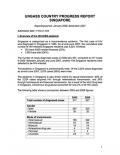
Resource | Publications,
The number of newly-diagnosed cases in 2006 was 357, compared to 317 cases in 2005. Between January and June 2007, another 164 Singapore residents were detected to be HIV-infected.

Resource | Publications,
HIV prevalence has remained at a very low level in Bangladesh. There have been only 874 HIV and AIDS cases detected in the country, and UNAIDS estimated about 11,000 adult infections in 2005. But surveillance and other epidemiological data indicate that the situation may be changing. Trends in reported cases have been steadily increasing over the last few years, and there is now a concentrated HIV epidemic among injection drug users (IDU) in a locality in Central Bangladesh.
Seven rounds of serological surveillance since 1998 have generally found extremely low HIV levels (less than percent) in female, male, and transgender sex workers, men who have sex with men, and occupational groups of men that may be more vulnerable to HIV [4-9]. The significant increase in HIV infections among IDU was found in 2004-2005 in the sixth round of national HIV Serological Surveillance (HSS), when 4.9 percent of all the injectors surveyed in Central City-A tested positive. This trend continued in the seventh round of national serological surveillance (2005-2006) so that 7.0 percent of all the injectors surveyed tested positive.
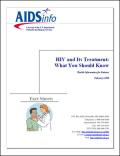
Resource | Fact Sheets,
These fact sheets are intended for use by people recently diagnosed with HIV infection or those who are considering starting HIV treatment. The fact sheets are designed as a series, but can also be used as stand-alone documents. Information in these fact sheets is based on Guidelines for the Use of Antiretroviral Agents in HIV-1-Infected Adults and Adolescents, developed by the U.S. Department of Health and Human Services (HHS) Panel on Antiretroviral Guidelines for Adults and Adolescents, which is convened by the HHS in conjunction with the Henry J. Kaiser Family Foundation.
The Guidelines, which is a "living document," provides updates on new advances in the treatment of HIV.
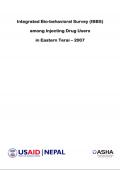
Resource | Publications,
This report details the findings of the third round of IBBS conducted among 345 male IDUs in the Eastern Terai. The primary objective of the study was to collect strategic information to analyze trends in risk behavior and HIV and STI knowledge and prevalence among IDUs.
The study was conducted among IDUs in the three districts of Jhapa, Morang and Sunsari in the Eastern Terai. A total of 345 male IDUs were sampled using a two-stage cluster sampling methodology.





